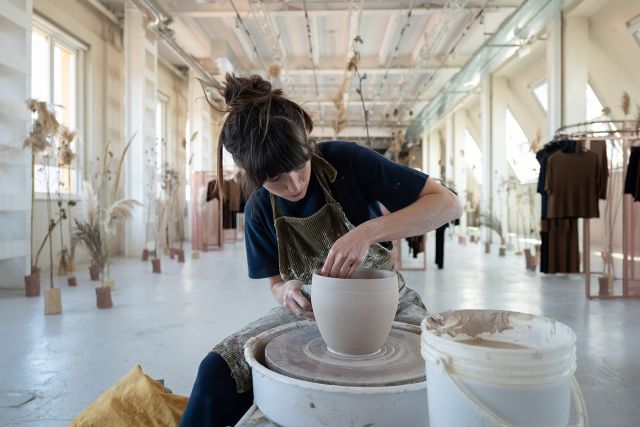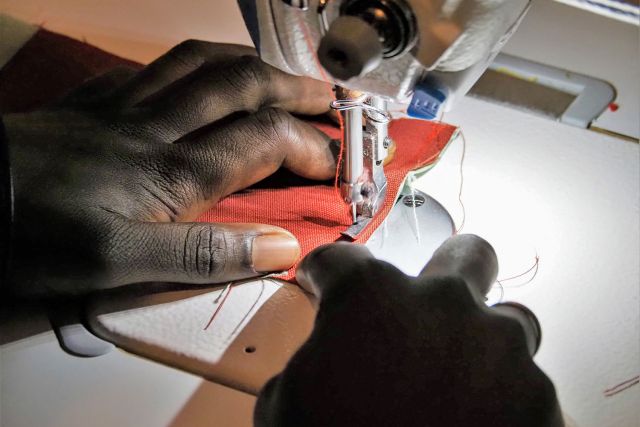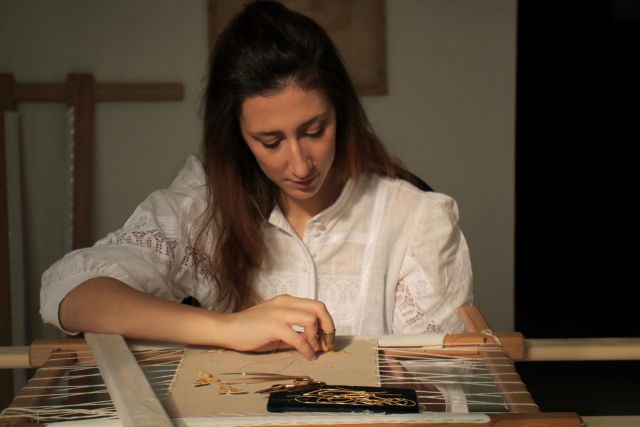These soup and dinner plates were made in honour of the table of the Southern Italian territory to which Giuseppe Cicalese belongs. They feature the cobalt blue of this tradition and the fish of the Campania sea.
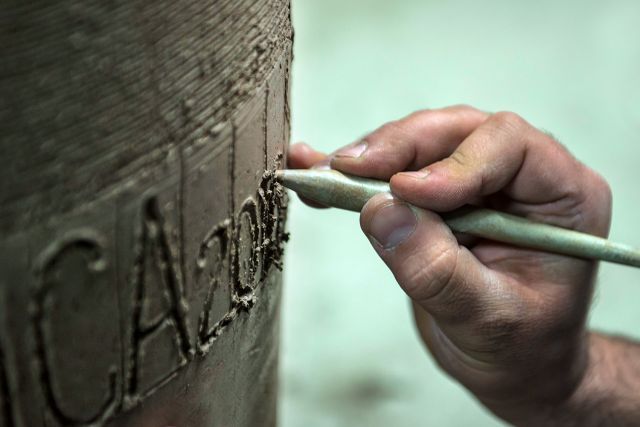
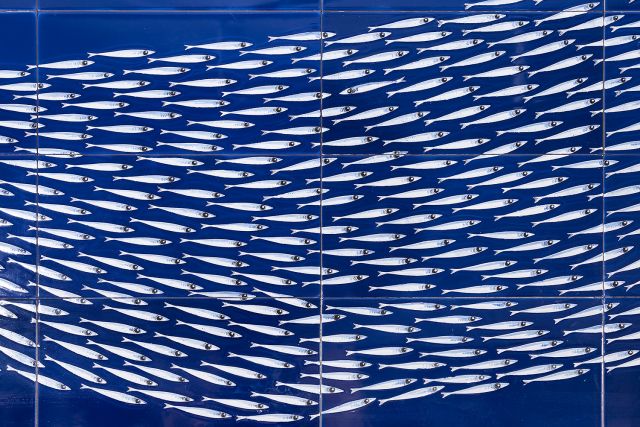
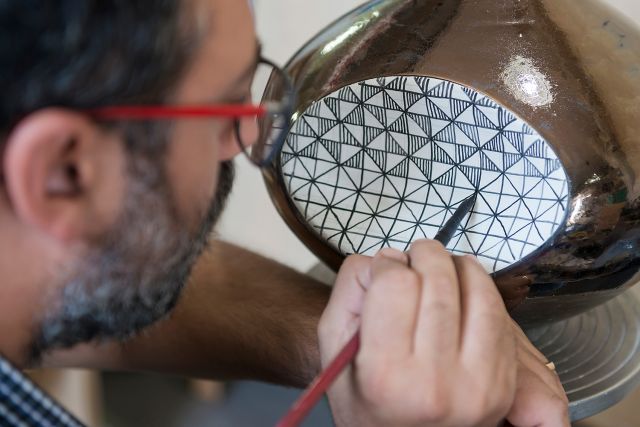
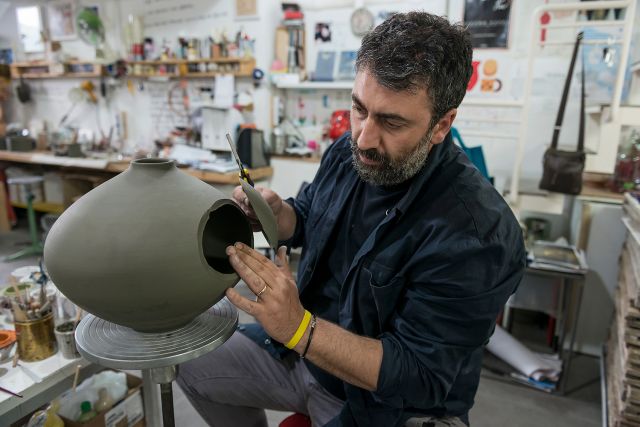
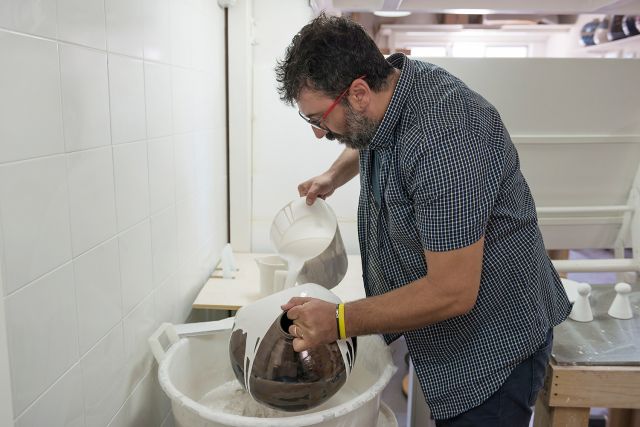
Giuseppe Cicalese
- Ceramicist
- Cava de' Tirreni, Italy
- Master Artisan
- Recommended by Mariella Avino
By appointment only
+39 3288369166
Shaking up tradition
- • Giuseppe is a passionate ceramicist
- • He is mostly inspired by nature in the south of Italy
- • His grandmother was an embroiderer in Vietri
Giuseppe (Peppe) Cicalese has been exploring the potential of ceramics for 30 years in his studio in Cava de' Tirreni, in southern Italy, where he was born. He models and remodels objects from a limited repertoire, and works to break down shapes and expectations. After a strong traditional apprenticeship, during which he acquired technical training, and thanks to his encounter with the artist Pietro Lista, he embarked on his own research path. This led him to work on the themes of nature from his homeland, fully revealing his pictorial sensibility and his natural talent as a draftsman. His grandmother had encouraged this talent of his when he was a child. Giuseppe likes to play between imagination and realism, with hints and winks at archaic designs.
Read the full interviewWorks
Photo: ©Jacopo Naddeo

Photo: ©Jacopo Naddeo
This is a majolica-type bowl plate decorated using gold powder, that was applied on the piece once it was already finished and polished. The object is then fired again for the third time. The gold remains fixed yet it is not incorporated into the enamel.

Photo: ©Jacopo Naddeo
This white and manganese wine amphora was born from rethinking ancient containers. Giuseppe Cicalese revisited the design with a modern twist as a piece of furniture, with a purely decorative function.

Photo: ©Jacopo Naddeo
To understand this work by Giuseppe Cicalese, one must imagine the vase completely decorated inside, and this patterned chunk having been cut and spun to reveal the inner decoration on the outside of the vessel.

Photo: ©Jacopo Naddeo
This is an oil jar, born from rethinking ancient containers, but revisited in a modern way by Giuseppe Cicalese as a piece of furniture, with a purely decorative function.





